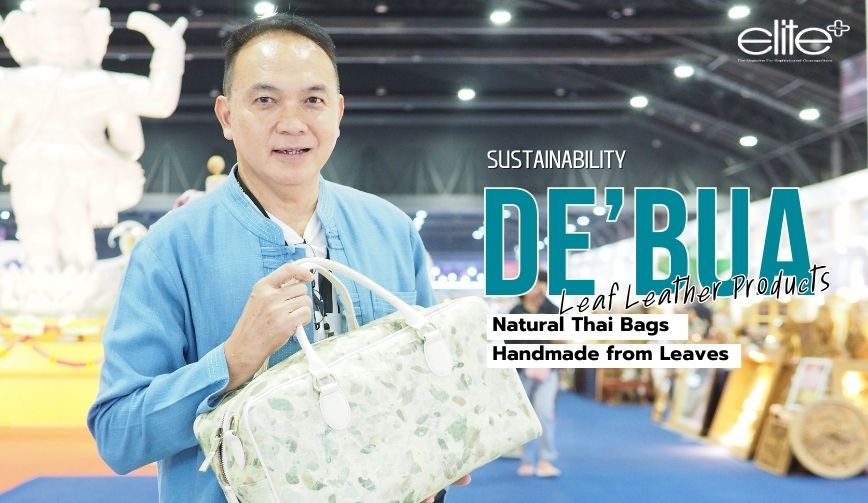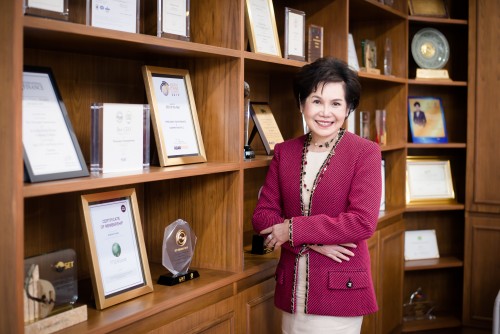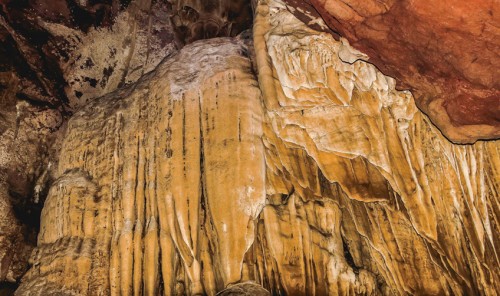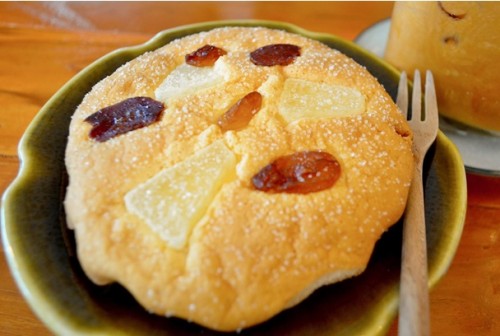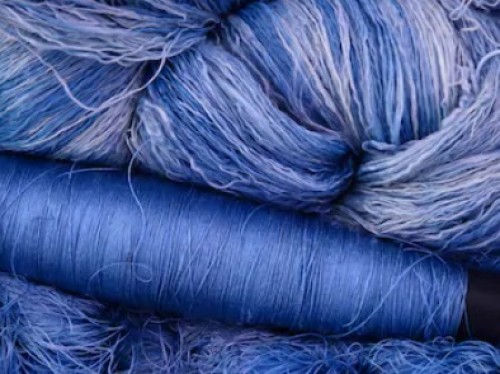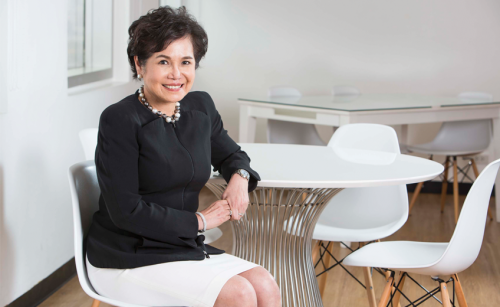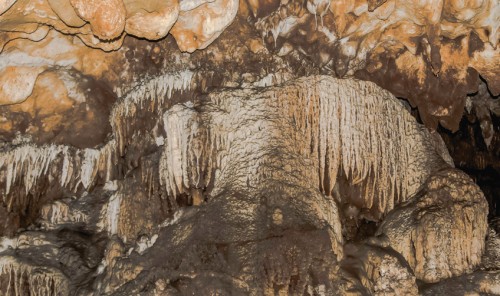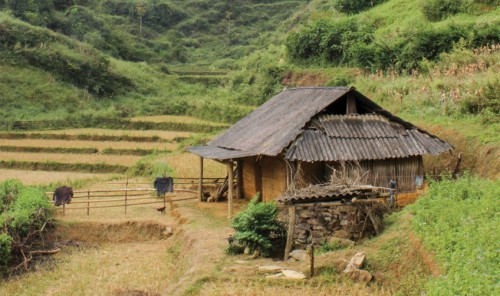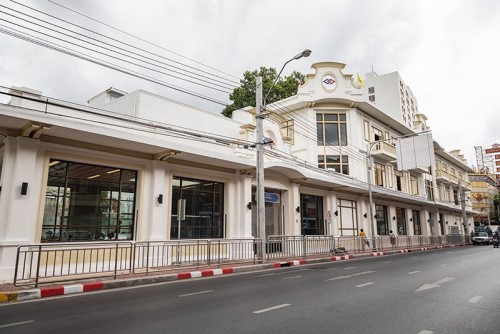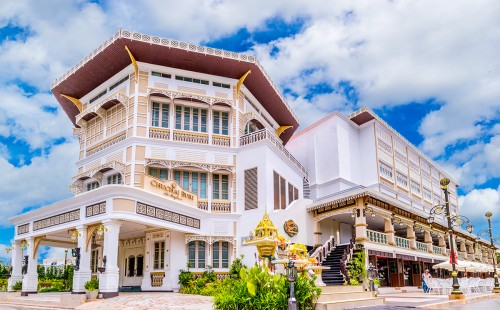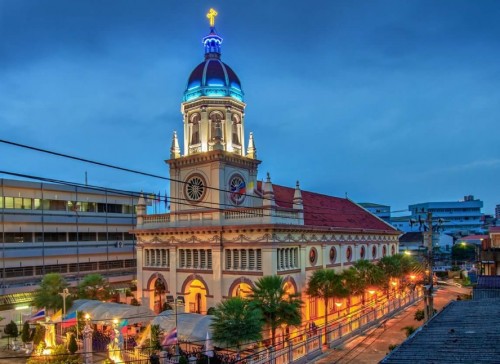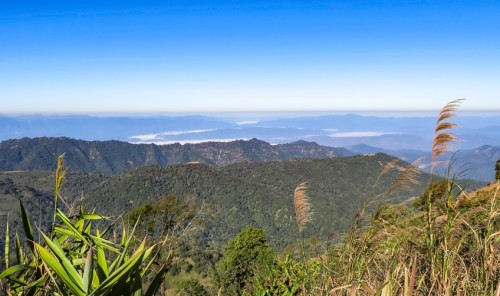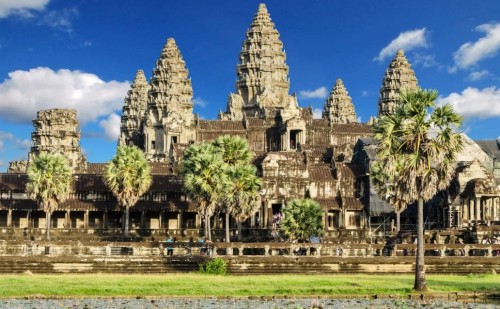Story by Au Thitima
Translated by Pairat Temphairojana
Inspired by a desire to make existing community resources useful and valuable, the Sirada product group under the De’ Bua brand, led by Charukit Hongwises, has created innovative leaf leather. By utilizing leaves such as lotus, rain tree and bamboo leaves, the community has successfully transformed ordinary products through traditional local wisdom into leaf leather that feature qualities similar to real leather. This leaf leather is then crafted into high-quality, beautifully designed bags that are exported to various countries. This not only adds value to leaves that many see as worthless, but also creates jobs and income for the local community.
"We were originally a brand called Sirada Products. At first, we made natural saa paper and environmentally friendly packaging. The De’ Bua brand was born when we saw lotus leaf-wrapped rice and thought that lotus leaves could be used for many other things. Initially, we used lotus leaves to decorate front-side packaging and gradually developed a process to make lotus leaves have leather-like properties. We experimented with steaming, fermenting, boiling, dyeing and studying the production of ‘krajud’ mats to apply this knowledge to our work, applying only local wisdom. For four years, we experimented until we could replicate lotus leaves as leather."
100% Handmade with a Focus on Natural Materials
"Our products are 100% handmade, with no machinery involved. We continuously test all materials because each natural material differs. For example, fertilized and unfertilized lotus leaves, or ‘Chattri’ lotus and regular ‘Bualuang’ lotus, have different properties. The most beautiful lotus leaves we use are seven to 15 days old.
“Normally, lotus leaves are brittle; even after making them soft and tough, they still retain some brittleness. We first created a framed canvas stretcher where we apply lotus leaves to the fabric and then top them with our self-developed rubber latex formula, enhancing their leather-like qualities. Previously, it took as long as three months to make one bag, but now with our innovations, it takes about 15 days."
Unique Designs with One-of-a-Kind Patterns
"Each lotus leaf we use is unique, even from the same pond, due to water marks and insect traces, giving each leaf its distinct characteristics. When crafted into products, they become limited editions—each piece is one of a kind. We don’t only use lotus leaves; we also use various local materials like rice straw from villagers’ fields, bamboo and rain tree leaves, as well as banana bark. We also use natural dyes from lac, Burmese rosewood and annatto seeds to add more colours to our products."
Creating Jobs and Income for Sustainable Communities
"Our products are made by the community. The production process is divided into sections: one manages lotus leaves while the other handles attaching leaves, top coating and sewing. We also operate according to a BCG (Bio-Circular-Green Economy) policy, creating jobs and occupations for various provincial communities. For example, in the Northeast, where many lotus are grown, we buy freshly cut lotus from villagers. Our goal is to increase employment, generate income for communities using local materials and encourage Thais to use our products. We do this for the community, not just ourselves."
Expanding to Attract Young Adults and Office Workers
"Most of our products are exported to Switzerland, France, Belgium, Japan and Spain, where we have distributors. Initially, we didn’t focus on the Thai market because it didn’t really support eco-friendly products. Now, we do aim to expand domestically, developing new materials and trendy designs to attract young adults and office workers. We participate in sales events to meet customers who might initially think our products are paper. We want them to experience our products firsthand and realize they are durable leaf leather that can be used in daily life and are long-lasting materials. We are also increasing our social media presence to raise product awareness."
Future Goals: Developing Durable Materials for Broader Use
"Our plan is to develop our leaf leather to be as durable as the renowned Freitag brand, weatherproof and suitable for making clothes and shoes. In the future, we would like to emphasise selling this leaf leather material to elevate ourselves as material science specialists by developing materials that are in high demand for people to produce their own products.
“We are collaborating with a university to create fabrics from plastic bottle fibers and cotton. Currently, the cotton we use is eco-friendly, but we aim for zero waste or 100% upcycled materials."
